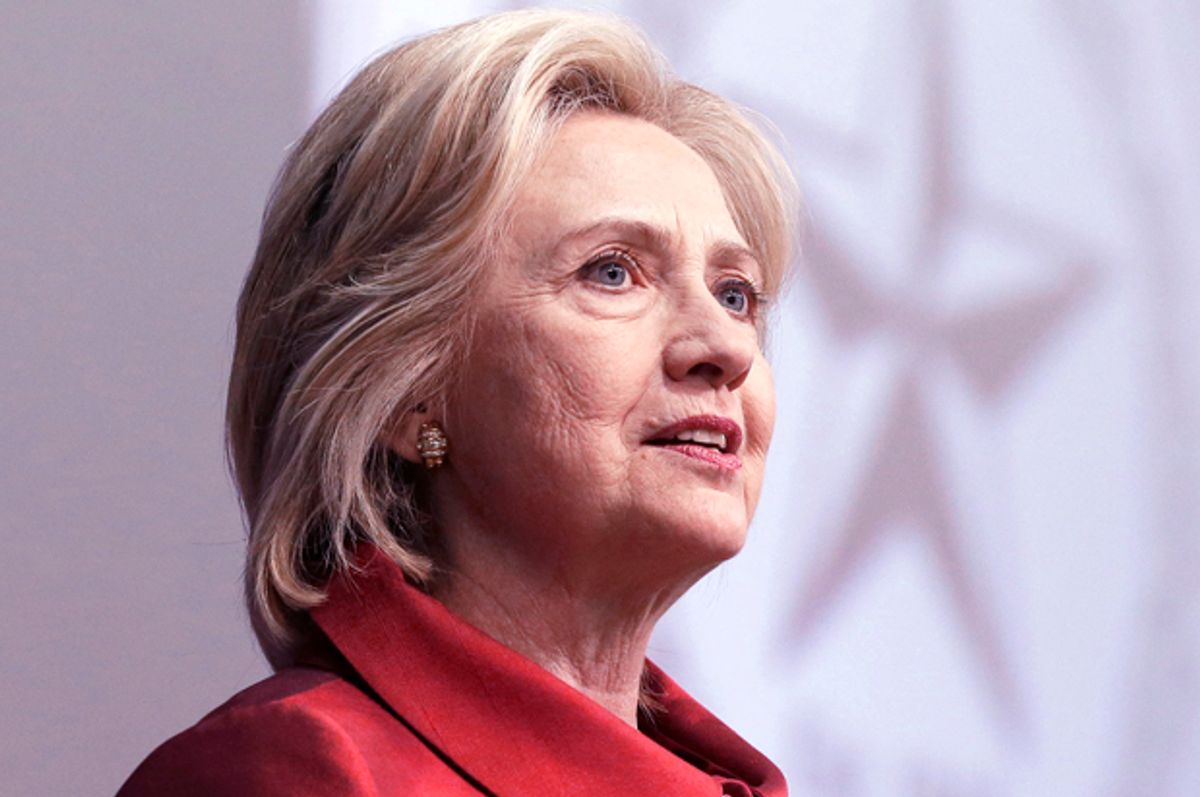Every week brings a new narrative about how Hillary Clinton, the breakaway favorite in the 2016 presidential race, is blowing it. This weekend we learned from the New York Times that she’s thoughtlessly abandoning her husband’s 23-year-old political strategy, which relied on luring white working class and southern voters back to the Democrats, in favor of Barack Obama’s “far narrower path to the presidency."
The headline frames the magnitude of her blunder: “Hillary Clinton traces friendly path, troubling party.” So even Democrats are troubled by the Clinton campaign’s calculus? That’s bad.
Well, no. A few red state Democrats are troubled. But more people are probably troubled by the venerated New York Times claiming that Barack Obama, the first Democrat to win more than 50 percent of the vote twice since Franklin Delano Roosevelt, traced a “far narrower” electoral path than Clinton.
Obama won 69 million votes in 2008 and 66 million in 2012; Clinton won 45 million and 47 million in 1992 and 1996. Obama won 365, then 332 electoral votes; Clinton did better, with 370 and 379. But turnout in 2012 was a remarkable (for the U.S.) 58.2 percent, compared with 49 percent in Clinton’s second race. Obama won bigger margins among African Americans, Latinos, Asians, young voters and women than Clinton did. Both Democrats lost white working class voters overall, though Clinton lost more narrowly.
By what metric, then, could Obama be said to have cut a “far narrower path to the presidency” than Bill Clinton did? Only if the only voters that matter are white.
On Twitter, Maggie Haberman (a writer I admire, for the record) defended the piece by noting that she and Jonathan Martin were merely reporting the concerns of prominent red state Democrats. That’s fine, as far as it goes. By all means, let’s hear West Virginia Sen. Joe Manchin’s thoughts on how Democrats should run for president.
“Go ask Al Gore,” Manchin told the Times. “He’d be president with five electoral votes from West Virginia. So it is big, and it can make a difference.” Actually, Gore would be president if he had one more vote on the Supreme Court, or if Florida counted all of its voters. It pains me to say, but there are many viable Democratic paths to the presidency that are easier than winning back West Virginia.
Haberman and Martin also tip their hands with folderol like this: “This early in the campaign…forgoing a determined outreach effort to all 50 states, or even most of them, could mean missing out on the kind of spirited conversation that can be a unifying feature of a presidential election.”
Notice how Democrats are responsible for “unifying” a divided nation. Nobody is asking when we’ll see even one of the 19 and counting Republican candidates visiting, say, Harlem during this campaign cycle. It’s another example of how well-meaning journalists ignore the rightward drift of the Republican Party -- and the troubling fact that, in the age of Obama, white southern voters have become so thoroughly hostile to Democrats that Hillary Clinton couldn’t reassemble her husband’s coalition if she tried.
Oh, by the way, later the story reveals that Clinton actually has organizers in all 50 states already, a fact shared by “senior Clinton campaign officials” in that controversial briefing last month. We also learn that “Senate Democrats are hopeful that she will lift their prospects, because there is considerable overlap in crucial states: The results in Colorado, Florida, Nevada, New Hampshire, North Carolina, Ohio and Wisconsin will almost certainly determine both who wins the White House and which party controls the Senate.”
So she’s got organizers in 50 states, and her campaign is targeting the seven crucial swing states listed above. What exactly is her campaign doing wrong?
Well, apparently she’s “taking advantage of polarization” and thus ceding “some of the authority that comes from the civic exercise of appealing to much of the nation,” Haberman and Martin tell us. They quote University of Texas historian H.W. Brands, who says: “The president is the one person who potentially could be the unifying figure in the country. And if the president or a presidential candidate basically writes off 40 states, then how in the world do the people in those 40 states feel like they have a stake in that person or that election?”
Of course, nobody is writing off 40 states. Obama won 28 states plus DC in 2008; Hillary Clinton expects to do at least that well in 2016. It’s true that her campaign is no longer floating ideas about “redrawing the map” electorally, a notion we’d heard last year. (I wrote about the politics and the policy behind these decisions here.) But the campaign says she will work for white working class voters in swing states, with a particular voter on unmarried women.
There are so many tired Clinton narratives on display here. We’re told Clinton is pursuing this “narrow” path to the presidency “even though a broader strategy could help lift the party with her.” That’s the Clintons: always out for themselves! But today, the once-warring Clinton and Obama tribes are united – and everyone can see the numbers. The path to 270 electoral votes involves consolidating the so-called Obama coalition, and moving out from there when possible. It’s trolling to suggest Clinton should have any other bottom line.

Shares